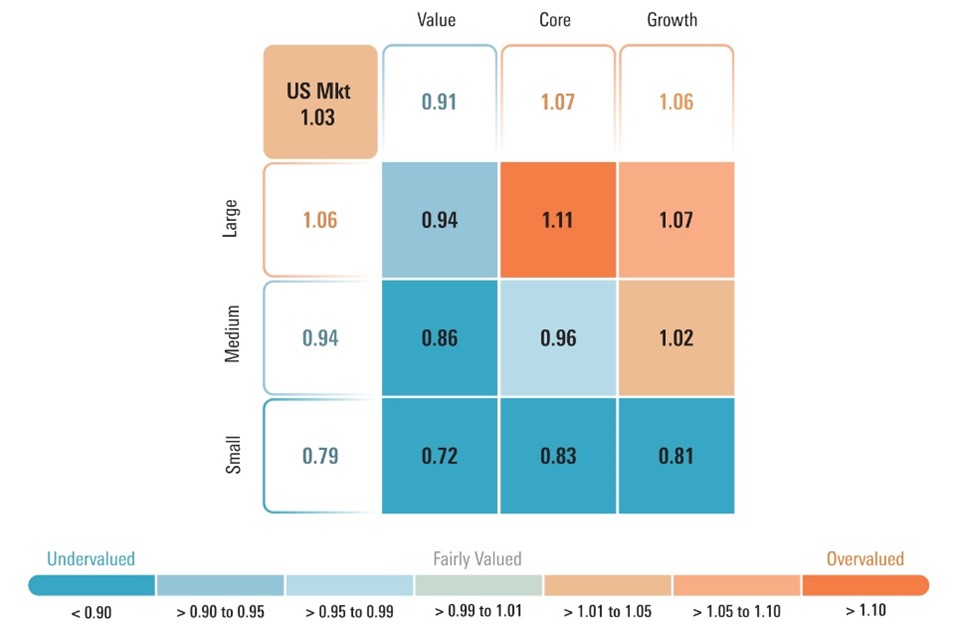20 Top Info For Deciding On AI Stock Trading Platform Websites
Top 10 Tips To Assess The Market Coverage Provided By Ai Trading Platforms That Forecast Or Analyze The Performance Of Stocks.Market coverage is one of the most important aspects to be considered when evaluating AI-powered trading platforms. It determines the number of markets and assets are accessible. Market coverage is important because it permits you to diversify, explore the world's markets, and adjust different trading strategies. These are the top ten tips to determine the market coverage of these platforms.
1. Evaluate Supported Asset Classes
Stocks: Ensure your platform supports major stock exchanges, including NYSE, NASDAQ LSE and HKEX and includes mid, small and large caps.
ETFs Check whether the platform lets you pick from a variety of ETFs that gives you an array of exposure.
Futures and options. See whether your platform provides derivatives such as futures, options or any other leveraged instrument.
Forex and commodities. Find out if the platform provides forex pairs with base and precious metals, energy products and agricultural commodities.
Cryptocurrencies. Find out if they support all the major cryptocurrencies and altcoins (e.g. Bitcoin, Ethereum).
2. Check the Geographic Coverage
Global markets. Ensure your platform covers the largest market in the world, such as North America Europe Asia-Pacific and emerging markets.
Make sure you focus on regional markets. Find out if the platform is focused on specific regions or specific markets which are in line to your business goals.
Local exchanges: Determine if your platform supports local and regional exchanges relevant to your business or your business plan.
3. Delayed Data Vs. Delayed Data
Real-time Data: Make sure that the platform has real-time data for trading and for making timely decisions.
Delayed data - Check whether delayed data is free or is available at a lower price. This could be enough for investors looking to invest for the long-term.
Data latency - Verify that the platform is able to reduce the delay of feeds that are real-time. This is crucial for high-frequency traders.
4. Evaluation of Data from the Past
Depth historical data: Ensure whether the platform is able to provide ample historical data (e.g. more than 10 years of data) for backtesting and analysis.
Look for levels of granularity. Historical data could include daily, intraday and weekly granularity.
Corporate actions: Examine to see if data is accounted for in the past. Dividends as well as stock splits and any other corporate actions should be included.
5. Check for the Order Book and Market Depth Information
Platform should provide Level 2 Data (order-book depth) to enhance price search and execution.
Bid-ask Spreads: Ensure that the platform displays real-time spreads for bid and request for the most accurate pricing.
Volume data: Ensure that the platform has comprehensive volume data to evaluate market liquidity.
6. Examine the coverage of Indices Sectors
Major indices - Make sure your platform can support major indices, such as the S&P 500 (e.g. NASDAQ 100 or FTSE 100), for benchmarking based on indexes.
Specific data for a specific sector for targeted analysis check if the platform offers information on a specific industry (e.g. healthcare, technology or energy).
Custom-made indices: Find out whether the platform supports the creation of or tracking of custom indices based on your preferences.
7. Test the integration of News and Sentiment Data
News feeds: Make sure the platform incorporates live news feeds of reputable sources (e.g., Bloomberg, Reuters) for events that affect the market.
Sentiment analysis: Check whether the platform offers tools for analyzing sentiment based on social media, news, or other data sources.
Trades driven by events: Check the platform's capabilities to support trading based on events (e.g. announcements on economic data or earnings announcements).
8. Test for Multi-Market Trading
Trading in cross-markets: The platform will allow trading on different asset classes or markets with a single user interface.
Currency conversion: Find out if your platform supports multiple-currency trading and automatic currency conversion.
Support for time zones: Check that your platform supports the ability to trade in multiple time zones.
9. Examine the coverage of alternative data Sources
Alternate data sources: To gain unique insights, check if the platform is able to incorporate different data sources.
ESG information: Find out if the platform has environmental governance, social and (ESG), or other data that can aid in socially responsible investment.
Macroeconomic data: Make sure the platform has macroeconomic indicators (e.g. inflation, GDP, interest rates) for analysis of fundamentals.
10. Review User Feedback and Market Reputation
Feedback from users: Read reviews from users to assess the credibility of the platform as well as market coverage.
Verify the credibility of the platform in terms of its coverage or awards for industry.
Find testimonials that prove the effectiveness of the platform in particular areas and asset classes.
Bonus Tips
Trial period for free: Check the coverage in the marketplace of the platform as well as its data quality with a demo or free trial.
API access: Check if the platform's API allows access to market data programmatically to create custom analysis.
Support for customers: Make sure whether the platform offers support for any queries relating to markets or data.
Following these tips can aid you in assessing the market coverage of AI platforms for stock prediction and analysis. You can choose one that gives you access to markets and data to ensure profitable trading. Comprehensive market coverage will allow you to diversify, discover the market, and adjust your portfolio to changing market conditions. View the best article source on ai for stock predictions for site info including best ai trading software, ai for trading, ai investment platform, ai trading tools, chatgpt copyright, best ai trading software, investment ai, ai stock, ai stocks, ai investing platform and more.

Top 10 Tips On Assessing Regulatory Compliance With Ai Stock Predicting/Analyzing Trading Platforms
The regulatory compliance aspect plays an important role in evaluating AI platforms for analysis and prediction of stocks. Compliance ensures a platform's operation within the legal frameworks. Users data is protected and the financial regulations are followed, which reduces any risk of legal concerns. These are the top 10 tips for assessing regulatory compliance.
1. Verify License and Registration
Regulatory bodies: Ensure the platform is registered and regulated by the appropriate financial regulatory bodies (e.g., SEC in the U.S., FCA in the UK, ASIC in Australia).
Broker partnerships: If the platform is integrated with brokers, make sure that brokers are also properly licensed and regulated.
Public records: Visit the regulator's website to check on the status of registration and previous violations.
2. Measure Data Privacy Compliance
GDPR: Ensure that your platform adheres to the General Data Protection Regulation.
CCPA : California Consumer Privacy Act (CCPA) compliance should be checked by the users.
Policies for handling data. Examine the platform's privacy policy and make sure it clarifies the manner in which user data is used to collect, share, and kept.
3. Evaluation of Anti-Money Laundering Measures
AML Policies: Make sure the platform is governed by AML policies that are able to identify and stop money laundering.
KYC procedures. See if your platform follows Know Your Customer processes for confirming user identity.
Examine the platform's monitoring of transactions. Does it keep track of transactions and report any suspicious activity to relevant authorities?
4. Verify that you are in compliance with Trading Regulations
Market manipulation: Ensure that your platform has measures to prevent market manipulation such as swap trading or fake trading.
Order types. Verify that the platform is in compliance with the regulations pertaining to order types (e.g. there's no illegal stop loss hunting).
Best execution: Ensure the platform follows the best execution methods. This will ensure that trades are carried out at the highest possible cost.
5. Cybersecurity Assessment
Data encryption: Ensure that the platform is using encryption to safeguard data in transit or at rest.
Incident response: Verify that the platform has a crisis response plan in place to deal with cyber-attacks or data breaches.
Certifications: Determine if the platform has cybersecurity certifications (e.g., ISO 27001, SOC 2).
6. Transparency Disclosure, Transparency and Evaluation
Fee disclosure - Ensure that all fees are clearly revealed, including additional or hidden charges.
Risk disclosure - Make sure that the platform provides clear risks and disclosures. This is crucial when trading strategies have high leverage or risks.
Performance reporting - Check to determine if there are accurate and transparent performance reports made available by the platform to its AI models.
7. Make sure you're in compliance with International Regulations
Cross-border trading If you plan to trade internationally make sure the platform complies in all jurisdictions.
Tax reporting: Check whether there are any reports or tools available to assist you in complying with tax laws.
Compliance with sanctions: Verify that the platform follows sanctions and does NOT allow trading or dealings with banned countries or entities.
8. Assess Record-Keeping & Audit Trails
Transaction records: For regulatory and auditing purposes, ensure that the platform maintains full logs of each transaction.
Logs of activity for users: Determine whether the platform is logging users' activities, including trading, logins, as well as changes to the account settings.
Audit-readiness: Find out if the platform is equipped to provide all necessary documents and logs to support an audit by a regulatory agency.
9. Assessment of Compliance to AI Specific Regulations
Algorithmic rules of trading: If the platform permits algorithmic trading, it should be in compliance with European regulations, such as MiFID II and U.S. Reg SCI.
Fairness and bias: Determine whether the platform monitors and reduces biases in its AI models to ensure fair and ethical trading.
Explainability: As required by certain regulations, the AI platform should be able to provide clear explanations for AI-driven decisions and predictions.
Review User Feedback & Regulatory History
User reviews: Use feedback from users to evaluate the platform's regulatory compliance.
Check the history of regulatory compliance to determine if any regulatory violations were committed, and also fines and penalties.
Third-party Audits: Verify that the platform has been subjected to third-party inspections to make sure the platform is in compliance with all applicable regulations.
Bonus Tips
Legal consultation: Consider consulting an expert in law to assess the platform's conformity to relevant regulations.
Trial period for free: You may make use of a demo or a no-cost trial to try out the conformity features of the platform and its documentation.
Customer support: Check that the platform offers assistance to customers who have issues or concerns relating to compliance.
With these suggestions to evaluate the regulatory compliance of AI platforms for analyzing and predicting stocks, ensuring you choose one that adheres to the legal framework and safeguards your rights. It is essential to be in compliance as it does not just reduce legal risks, it also increases trust and confidence in the platform. Read the best the full details about ai options trading for website info including ai stock trader, ai trading tool, free ai tool for stock market india, ai copyright signals, how to use ai for copyright trading, ai stock price prediction, best ai penny stocks, stock trading ai, best ai stocks to buy now, ai options trading and more.
